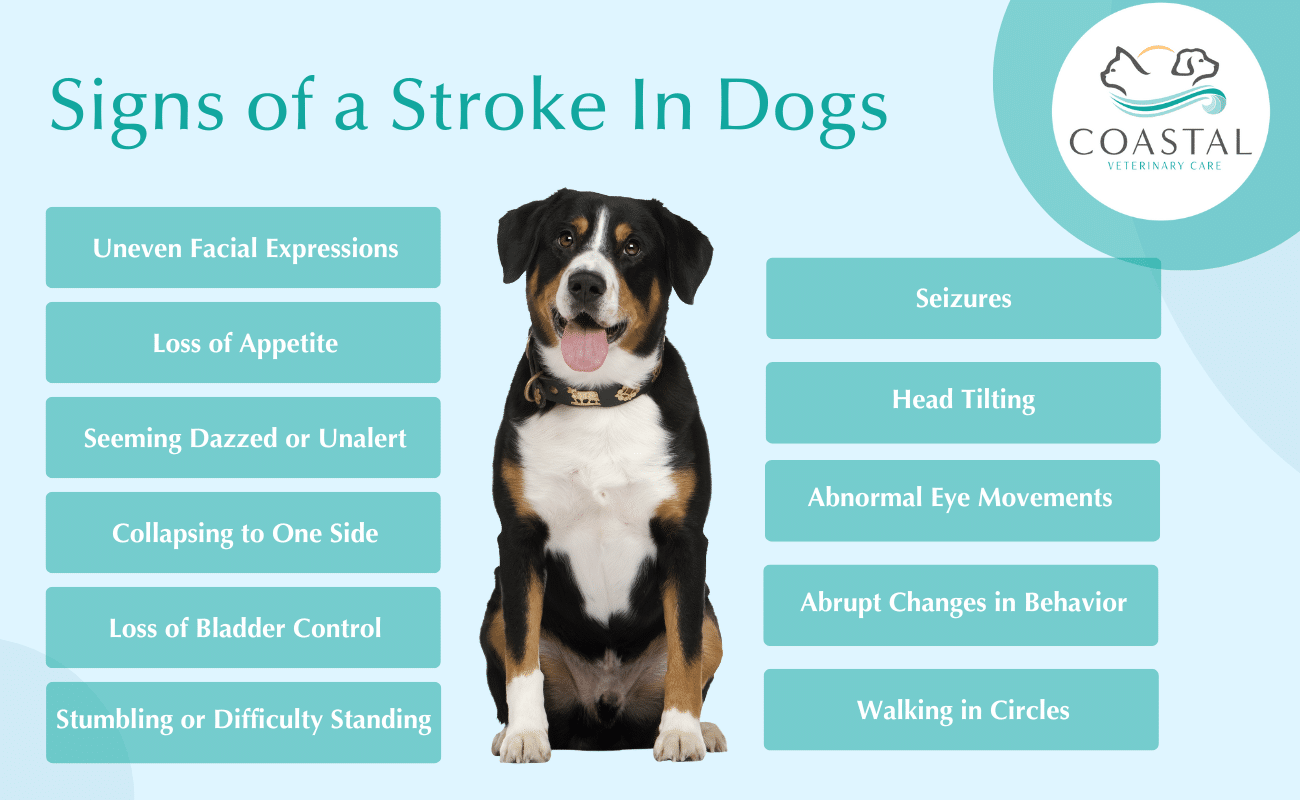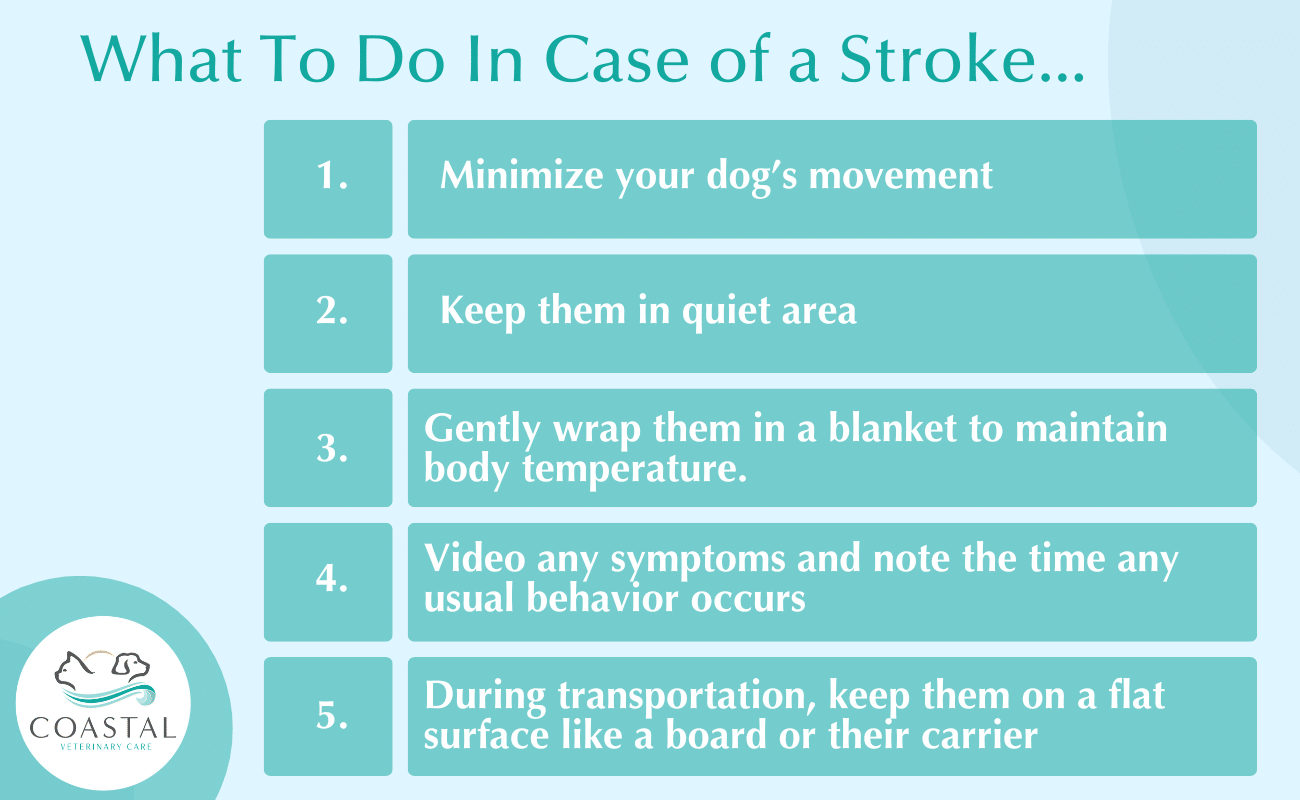Signs of Strokes in Dogs
The Short Answer: A stroke in dogs occurs when blood flow to the brain is disrupted, either by a blood clot or bleeding in the brain. Common symptoms include head tilt, loss of balance, sudden confusion, and weakness on one side of the dog’s body.
It can be frightening when a beloved dog shows signs of a stroke. These medical emergencies, also called cerebrovascular accidents, happen when the brain’s blood supply is suddenly interrupted. While less common in dogs than humans, strokes require immediate veterinary care to give your furry family member the best chance at recovery.
Understanding stroke symptoms in dogs can make the difference between life-altering complications and a positive outcome. This article will walk you through the warning signs of dog strokes, what causes them, and the steps you should take if you suspect your pet is having one. We’ll also cover the ways to support your dog’s recovery process, giving you the knowledge you need to act quickly if faced with this scary situation.
Dog Stroke Symptoms

Sudden Behavioral Changes
-
- Confusion or disorientation in familiar places
- Not responding to their name or basic commands
- Abnormal eye movements or trouble focusing
- Seeming dazed or less alert than usual
- Not recognizing family members
Physical Signs
-
- Walking in circles
- Leaning or tilting to one side
- Problems with balance or coordination
- Stumbling or difficulty standing
- Head tilt
- Uneven facial expressions
- Different-sized pupils or uneven eye positions
One-Sided Body Changes
-
- Weakness in legs on one side of the body
- Dragging paws while walking
- Collapsing to one side
- Loss of bladder control
- Eating difficulties or trouble swallowing
- Loss of appetite
Remember to note when symptoms first appear and any changes in their severity. This information helps your veterinarian understand how long the stroke has been affecting your dog. If you notice any of these signs, contact your veterinarian right away.
Types of Strokes in Dogs
Just like humans, dogs can experience two main types of strokes: ischemic and hemorrhagic. Each type affects the brain differently and understanding these variations helps pet owners recognize and respond to potential stroke events.
Ischemic Strokes
Ischemic strokes happen when blood flow to the brain becomes blocked, usually by a blood clot. These blockages can develop due to underlying medical conditions like heart disease, diabetes, or blood disorders. Common triggers include high blood pressure, kidney disease, or problems with blood clotting.
The blockage typically occurs in small blood vessels that supply specific regions of the brain. When these areas lose blood flow, brain tissue can become damaged within minutes. These strokes most often affect areas controlling movement, balance, and coordination.
Hemorrhagic Strokes
Hemorrhagic strokes occur when a blood vessel in the brain ruptures and bleeds. This bleeding can result from high blood pressure, trauma, or blood vessel abnormalities. The leaked blood puts pressure on the surrounding brain tissue, causing damage to those areas.
These strokes commonly affect larger sections of the brain compared to ischemic strokes. The bleeding typically impacts areas responsible for consciousness, breathing, and heart rate regulation.
Higher-Risk Breeds and Age Factors
While no breed is completely safe from strokes, some dog breeds face a higher chance of experiencing strokes, particularly:
-
- Greyhounds
- Cavalier King Charles Spaniels
- Miniature Schnauzers
- Yorkshire Terriers
Age plays a significant role in stroke risk. Older dogs show an increased likelihood of strokes, with most cases occurring in senior dogs between 8 and 13 years of age. However, strokes can happen at any age, especially if other health conditions are present.
Maintaining regular vet check-ups and managing underlying health conditions helps reduce risks across all breeds and age groups.
Immediate Actions and Diagnosis

When you notice potential stroke symptoms in your dog, quick action can make a significant difference in recovery. First, minimize your dog’s movement and keep them in a quiet, comfortable space away from other pets and excessive stimulation. Wrap them gently in a soft blanket if they’re having trouble maintaining body temperature.
During transportation to the veterinary clinic, position your dog on a flat surface like a board or in their carrier. Take a quick video of the symptoms on your phone – this helps veterinarians understand what happened before arrival. Note the time symptoms began and any recent unusual behaviors or events.
The timeline for seeking help is straightforward – if you notice a sudden onset of symptoms like head tilting, loss of balance, or one-sided weakness, treat it as an emergency. Don’t wait to “see if it improves.” Contact your veterinarian immediately or head to the nearest emergency animal hospital. The first few hours matter most for starting specific treatments and preventing further complications.
Acting quickly, staying calm, and providing accurate information to your veterinarian creates the best chance for positive outcomes in cases of suspected dog strokes.
Recovery and Prevention

Quick action and proper medical care make a significant difference in a dog’s full recovery from a stroke. While some dogs recover within weeks with proper care and rehabilitation, others may need several months of supportive care. The recovery journey varies for each pet, but watching for early warning signs and maintaining regular check-ups helps catch potential problems early.
To reduce stroke risks in your dog, schedule regular wellness visits, maintain a healthy weight through proper diet and exercise, and keep up with recommended blood pressure screenings. If you notice any sudden changes in your pet’s behavior, balance, or eye movements, don’t wait – contact a veterinarian right away.
Here in Myrtle Beach, Coastal Vet Clinic provides specialized care for pets recovering from strokes. Our fear-free certified team offers comprehensive neurological evaluations and personalized treatment plans. Call us today at (843) 983-2969 to schedule a wellness check and learn more about protecting your furry family member from stroke risks.
Choose Coastal Veterinary Care in Myrtle Beach, SC
At Coastal Veterinary Care, we can help you determine an appropriate veterinary schedule that best supports your pet’s needs. From planning regular routine visits to understanding what to look for to identify when your pet may need to be seen to evaluate a specific injury or illness, we are here to help you make sure your pet gets the best possible care. Contact us today to learn more about why we are a trusted choice among pet owners in the Myrtle Beach, SC, area or to schedule an appointment!
